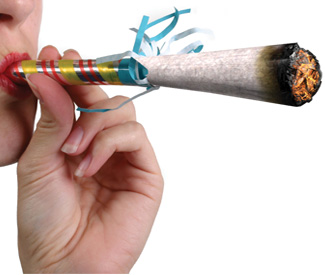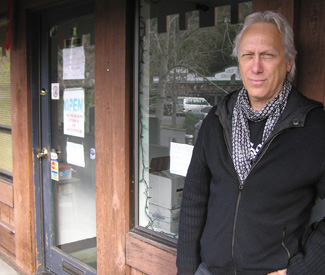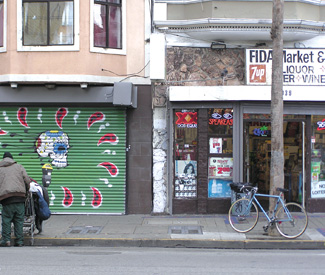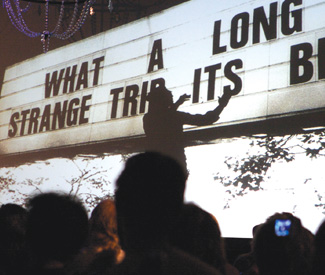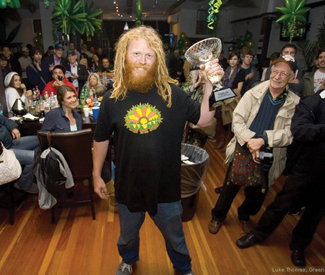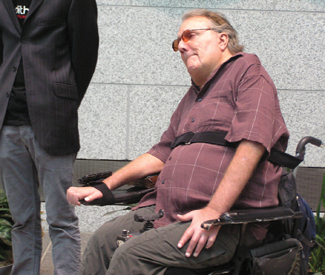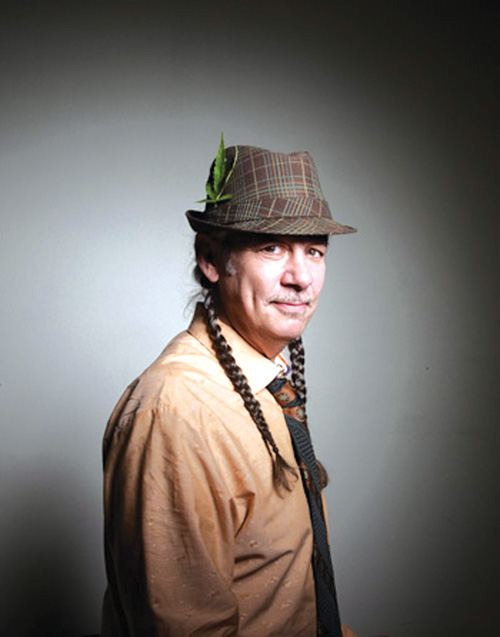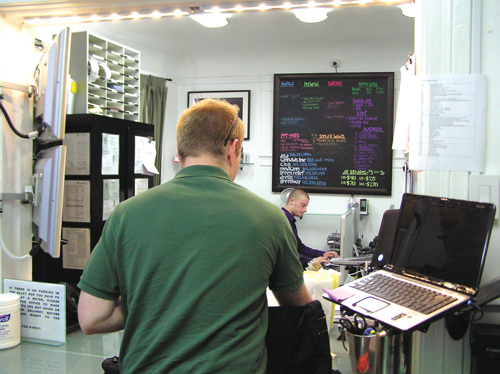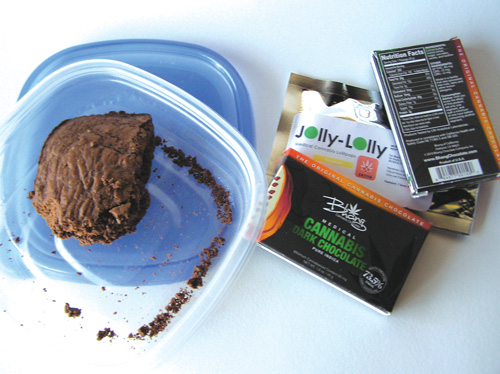caitlin@sfbg.com
HERBWISE I’d been waiting for an excuse to interview Coral Reefer. We have made a habit at my house of following the Oakland waitress religiously on the social Interwebs. What will she be smoking out of today? (Oh please, please let it be the Hello Kitty bong.)
Reefer, in all her penciled-eyebrows, bleached blond, 23-year old glory, represents that new kind of celebrity: the self-made Twittergasm. A casual observer of her Stoney Sundays weekly YouTube updates might question her 8,700-plus Twitter followers. At over one million views deep, these are now hosted by a woman named Rosepants so Reefer can focus on other projects. She also specializes in naked bong shots, and endless shout-outs to her cannabis community (I am checking her feed as I write this: her most recent post is “Attention: @heister07 is looking for fabric with cannabis prints or pot leaves on it. Anyone know where to look?”)
But say what you will about her methods, Reefer’s finding ways to educate the masses on all things cannabis. Come for the side boob, stay for the updates on the government’s double standard dealings with marijuana. A blog post on News Nug, her recently-created current events site, announced the dangers of Spice. “While patients and partygoers are seeking the soothing beneficial results of cannabis, they are greeted with a surprise blend of chemicals in each distribution,” she writes of the synthesized “cannabis” that recently stirred up a to-do in mainstream media.
Raising the hue-and-cry over Spice was excuse enough, I reasoned, for a Coral Reefer edition of Herbwise. So finally, it is happy hour on Friday, and I have locked down Reefer’s first in-person interview, to be conducted in the little-known smoking lounge above the SoMa dispensary Green Door. I am late, but she has been a productive stoner and offers me a pre-packed bong when I sit down. I immediately become too high to formulate insightful questions.
This turns out not to be a problem, because despite her babely exterior, Reefer knows what she has to say and says it well. And she says it slowly, which is important for me in this particular moment because I’m being overwhelmed by the hum of the prodigious ventilation system and the intermittent interruptions by well-meaning grey-ponytailed men unused to seeing two young women unattended in the cannabis lounge.
“Spice should be the realization that cannabis cannot be synthesized,” Reefer says. Often when cannabis-like substances are produced by artificial means, only one endocannabinoid is mimicked, which Reefer suspects is the reason behind some of the adverse side effects of Spice. These have been reported as heart attacks and psychotic episodes.
It’s a lot to take in when you’re stoned, but even (especially) through the fog it’s clear that Reefer has a knack for explaining cannabis facts to potheads.
Talk turns to politics, as talk with cannabis folk tends to do in this era of federal government crackdowns, and Reefer surprises me by saying that she doesn’t consider herself an activist, and does not plan on aligning herself more closely with formal patient advocacy organizations during the upcoming presidential election season.
She thinks that her message is better off the way it is, independent, controlled only by herself, and capable of appealing to broad swath of cannabis users. Her Internet fans include many smokers who don’t identify with the patient’s right movement that has presented itself as the most visible face of marijuana advocacy.
Says Reefer: “I don’t want to be preaching to the choir. My followers don’t consider themselves patients or recreational users. I feel like I’m reaching my own audience these days.”




